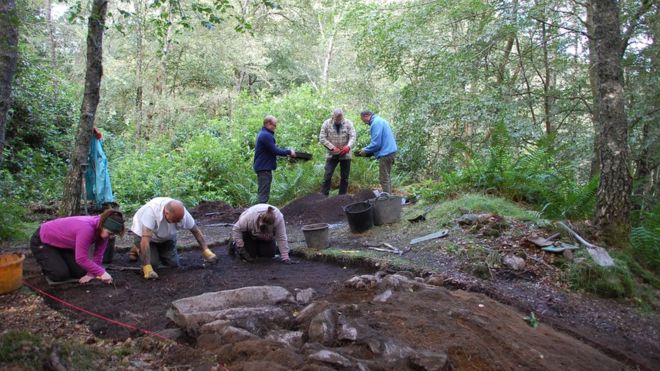Ancient Hillfort in Scotland revealed as important Pictish site for trade and production
King’s Seat Hillfort in Scotland is located to the north of Dunkeld (Scottish Gaelic: Dùn Chailleann) on a major bend in the River Tay (Scottish Gaelic: Tatha). The name Dùn Chailleann means Fort of the Caledonians. The 'fort' part of the name is thought to be the hill fort on King's Seat. Dunkeld is said to have been founded or by Caustantín, King of the Picts from about 789 until 820. The Picts were a Celtic society of farmers who played a crucial part in going on to help forge the kingdom of Scotland.
Archaeologists excavated the site of the hilltop fort near Dunkeld last year. A new report based upon results from those and previous excavations, point to the site having been a stronghold of the elite in the local population, with "influence over the trade and production of high-status goods". As well as evidence of metal-working, spindle whorls used in textile production were found. Crucibles, whetstones, stone and clay moulds found were also uncovered. The discoveries suggest more iron and other metal working being undertaken than necessary for the occupants own use.
Perth and Kinross Heritage Trust (PKHT) worked with Dunkeld and Birnam Historical Society, archaeological contractors AOC Archaeology Ltd on the digs. Thirty community volunteers and Pitlochry High School students also assisted with the excavations. The discoveries have led to the conclusion that the site was an important centre for production. The investigations have uncovered considerable evidence of the way in which people lived and worked. The remains of a building with a large hearth on the summit, with fragments of glass drinking vessels, gaming pieces, animal bone and horn were found. Other items point to the Picts also having trading relations with distant communities.
Hill Forts can be found throughout the present Celtic lands and in many of those areas once lived in by Celtic tribes. Typically they date to the Bronze and Iron Ages. Usually they followed the contours of a hill, consisting of one or more lines of earthworks, with stockades or defensive walls, and external ditches. Positioned to take advantage of the higher elevation in which they were located, they would act as a fortified refuge and defended settlement. Hill forts could be home to a significant number of people whose dwellings were built within the safety of the fortification. The hill tops on which they were built gave commanding views of the vicinity. Often they would be positioned over strategically important mountain passes or river crossings.
Image: Courtesy of PKHT - Archaeologists at previous excavation at King's Seat Hill Fort.






